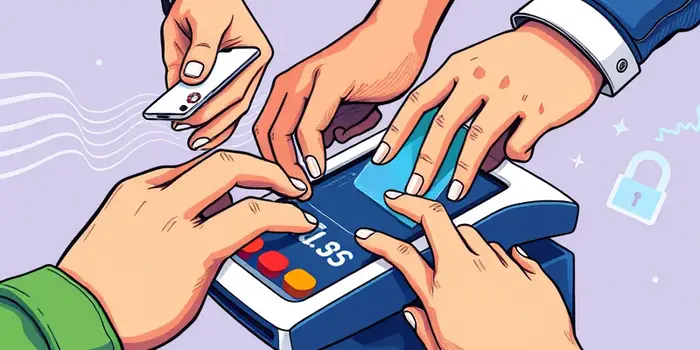
In an era where efficiency and security are paramount, contactless payments have emerged as a leading transaction method that combines both convenience and protection. Whether you’re grabbing a coffee or catching a taxi, a simple tap or wave completes your purchase almost instantaneously.
Contactless payments enable consumers to pay by tapping their payment card, smartphone, smartwatch or other NFC-enabled device on a merchant terminal. This tap-to-pay process replaces the traditional swipe, insert and sign interaction, offering a streamlined checkout. Physical cards and devices display the recognizable contactless symbol—a sideways wifi-like icon—indicating they are ready for use. Digital wallets such as Apple Pay and Google Pay store encrypted card details on a secure element chip, allowing users to transact without exposing sensitive information directly.
The underlying NFC or RFID technology creates a secure wireless link within a few centimeters of the reader, minimizing the risk of accidental or unauthorized activation. As adoption surges, more retailers, transit systems and service providers are equipping terminals with contactless capability to meet consumer demand for frictionless everyday transactions.
Near Field Communication (NFC) and Radio-Frequency Identification (RFID) power the contactless experience. When you hold your device near the payment terminal, an electromagnetic field is established, initiating an encrypted data exchange. These protocols ensure the transaction data is transmitted only when devices are extremely close, satisfying the short range requirement reduces skimming risk.
Many smartphones and wearables incorporate a dedicated secure element chip that stores payment credentials within an isolated hardware environment. This design ensures that even if the device’s primary operating system is compromised, the payment data remains protected and inaccessible.
Speed and convenience lie at the heart of contactless payments. Transactions often complete in under one second, significantly reducing queue times at busy checkouts. For small-dollar purchases—often under local transaction limits—no PIN or signature is required, delivering true efficiency.
Beyond speed, contactless technology enhances hygiene by reducing physical contact points. Consumers no longer need to touch PIN pads or exchange cards, minimizing the potential spread of germs—especially crucial during health crises. This attribute has driven widespread adoption in healthcare facilities, public transportation and quick-service restaurants.
Retailers report up to a 20% increase in speed of service following contactless terminal installations, while consumers cite a preference for merchants offering tap-to-pay options. This shift toward digital wallets and card taps signals a paradigm shift in consumer behavior, favoring instant and touch-free interactions.
Security stands as a cornerstone of the contactless ecosystem. All transaction data is encrypted end-to-end, using AES or similar industry-standard algorithms. Even if data packets are intercepted, attackers cannot decode the content.
Tokenization enhances this protection by substituting sensitive card information with a unique digital token. Each purchase triggers a new token generation, ensuring that no reusable card data ever leaves the secure element. These tokens, combined with transaction-specific dynamic authentication codes, make replay attacks virtually impossible.
Device authentication fortifies the system further. On smartphones and wearables, payments require the user to unlock the device via PIN, password, fingerprint or facial recognition. This dual-layer approach—device unlock plus secure token exchange—limits unauthorized transactions if a device is lost or stolen.
Real-time fraud detection systems analyze transaction patterns, geolocation and spending habits to identify anomalies. Banks can then automatically block suspicious activity or prompt additional verification, safeguarding both consumers and businesses.
While contactless payments are highly secure, attackers may still attempt to exploit vulnerabilities. NFC skimming devices, though limited by the technology’s short range, can be used in crowded areas to try to read card data.
Implementation flaws or outdated terminal software can introduce risks. Merchants and terminal providers must stay current with firmware updates and follow best practices to mitigate potential exploits.
In the event of device loss, consumers should report to their card issuer and mobile wallet provider without delay. Issuers can remotely suspend or wipe stored credentials, preventing further unauthorized use.
Consumers should adopt a proactive approach by combining biometric security, strong PINs and push notifications to remain aware of every transaction. Regularly reviewing bank statements or enabling instant alerts ensures any irregularities are caught quickly.
Businesses, on the other hand, should invest in payment terminals that support the latest NFC standards and encryption protocols. Staff training is essential: employees need to recognize signs of tampering and fraud, and confidently communicate security measures to customers.
Contactless payments have grown exponentially. In many regions, more than 60% of in-store card payments are now made via tap-to-pay. Emerging markets show even faster adoption, driven by mobile-first economies.
Transaction thresholds vary: common limits range from 25 EUR in parts of Europe to 100 USD in North America and Australia. Banks may adjust these caps based on risk assessments and consumer behavior.
These limits balance user convenience with security assurances, ensuring high-frequency small purchases remain seamless while larger transactions require added verification.
Looking forward, the contactless payment landscape will expand into the Internet of Things. Appliances, vending machines and connected vehicles will integrate NFC readers, enabling seamless, automated transactions as part of daily life.
Advances in biometric authentication—such as vein mapping or heartbeat recognition—promise even stronger security. Wearable devices may also host multiple payment credentials, offering consumers greater flexibility across platforms.
Cross-border open banking initiatives and real-time settlement systems will accelerate global interoperability. As regulatory frameworks evolve, consumer protection measures will strengthen, fostering wider adoption and trust.
Contactless payments have set a new standard for transaction speed, convenience and security. By adhering to proven best practices and staying informed, consumers and businesses can confidently embrace this transformative technology. The future of payments is not just touch-free—it’s built on a foundation of trust, innovation and resilience.
References













